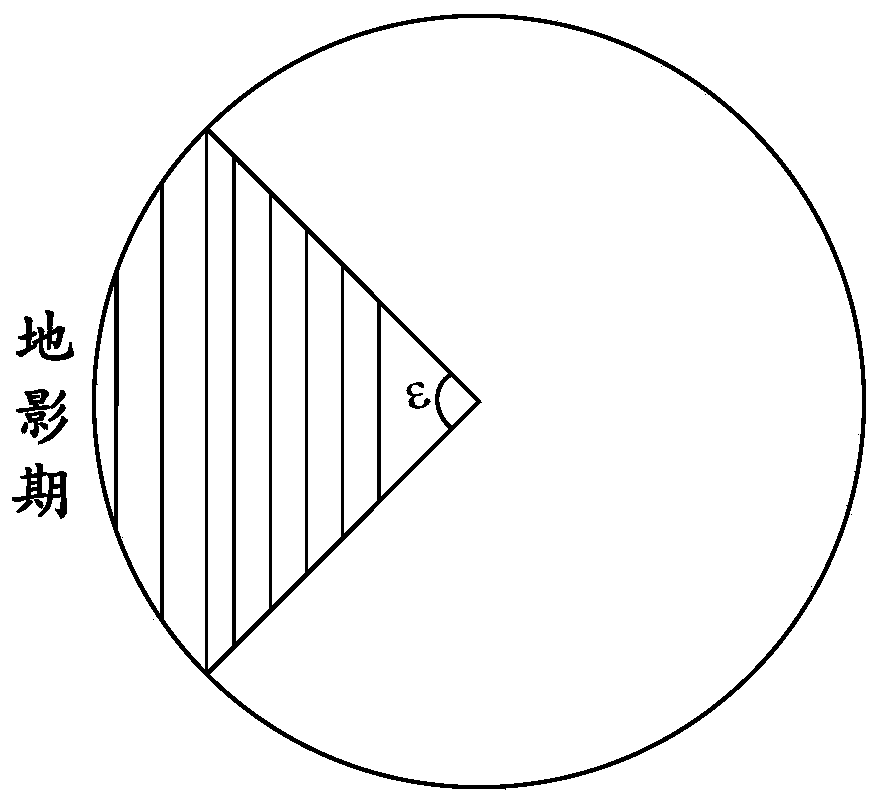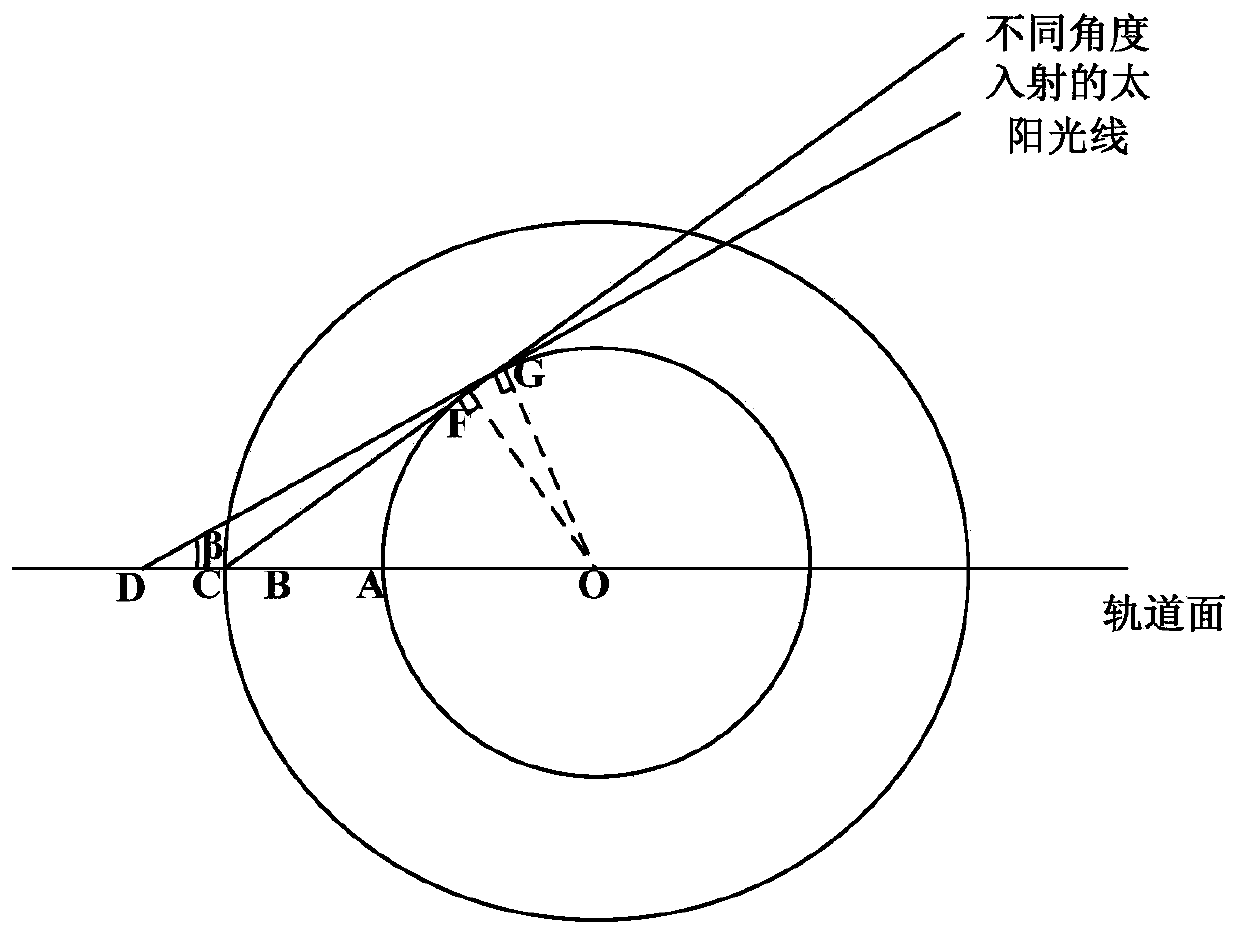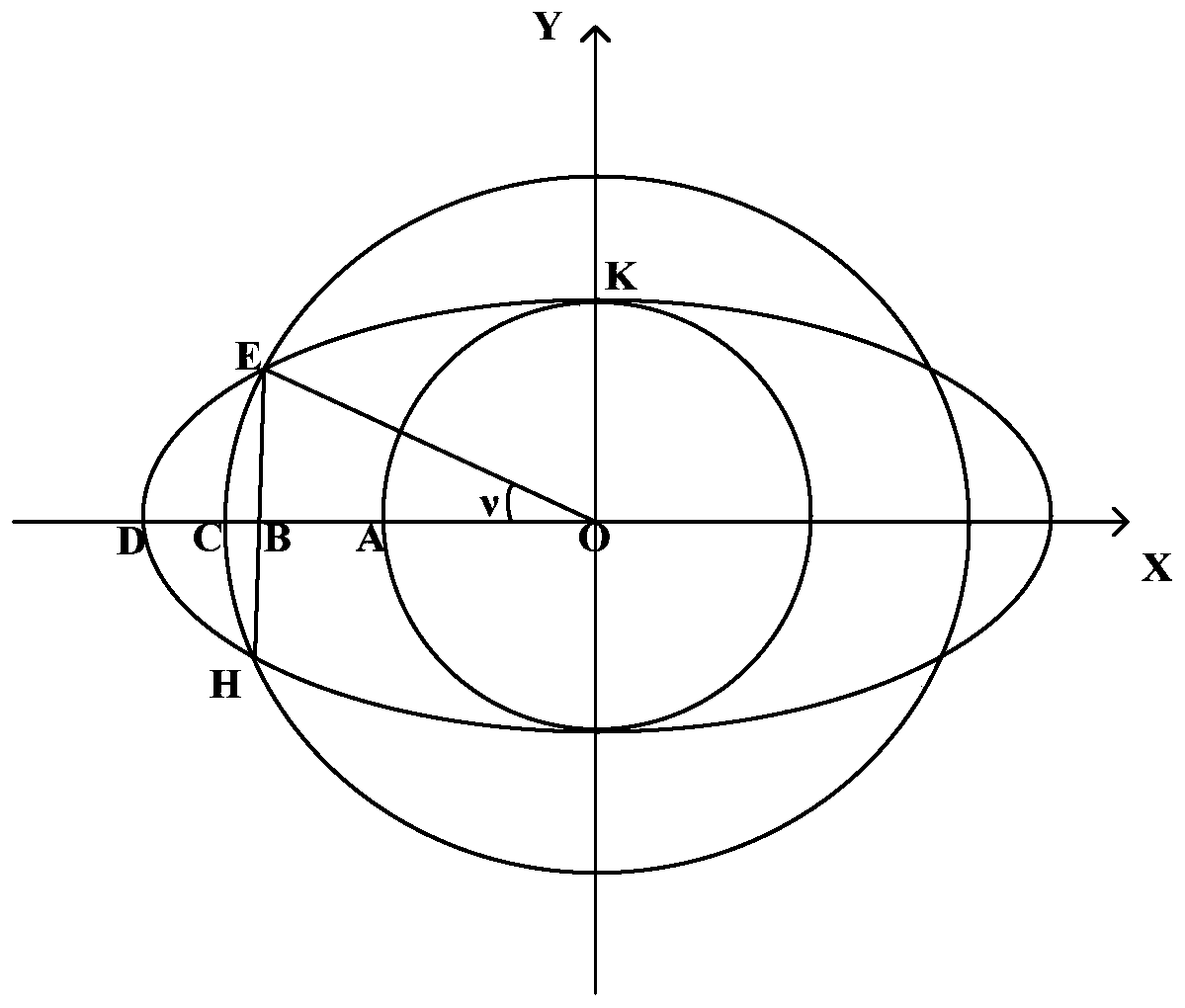Method for determining optimal offset angle of non-sun-oriented solar cell array
A solar cell array and a technology for determining the method, applied in the direction of electrical digital data processing, special data processing applications, instruments, etc., can solve the problems of incomplete calculation, bias angle step size, etc., and achieve simple calculation methods, accurate acquisition, The effect of shortening the step size
- Summary
- Abstract
- Description
- Claims
- Application Information
AI Technical Summary
Problems solved by technology
Method used
Image
Examples
Embodiment Construction
[0045] The present invention is a method for determining the optimal bias angle of a non-solar directional solar array. Through the solar array output energy calculation model, all solar array bias angles and orbital incidence angles are traversed, and the optimal solar array bias angle is selected . Including steps:
[0046] 1) According to the value range of the satellite's orbital incidence angle, sampling at a certain sampling step to obtain n orbital incidence angles β i , Where n is a positive integer, i is a positive integer and i∈[1,n]; the orbit of the satellite is a near circular orbit;
[0047] 2) According to the satellite orbital height H, the orbital incidence angle and the input solar array installation offset angle, determine the incidence angle β of each orbital respectively i Corresponding solar cell array output energy, obtain n orbital incident angle β i Respectively correspond to the output energy of the solar cell array, and use the obtained output energy of t...
PUM
 Login to View More
Login to View More Abstract
Description
Claims
Application Information
 Login to View More
Login to View More - R&D
- Intellectual Property
- Life Sciences
- Materials
- Tech Scout
- Unparalleled Data Quality
- Higher Quality Content
- 60% Fewer Hallucinations
Browse by: Latest US Patents, China's latest patents, Technical Efficacy Thesaurus, Application Domain, Technology Topic, Popular Technical Reports.
© 2025 PatSnap. All rights reserved.Legal|Privacy policy|Modern Slavery Act Transparency Statement|Sitemap|About US| Contact US: help@patsnap.com



